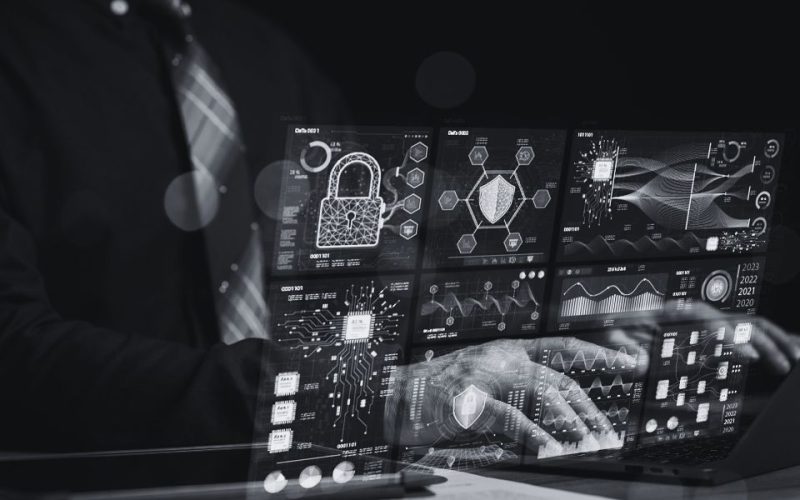Email is a fundamental communication tool for businesses, but it also represents a prime target for cyberattacks. Small and medium-sized businesses (SMBs), often lacking the same level of security infrastructure as larger corporations, are particularly at risk. This makes choosing the right email security solution a crucial decision. With so many options on the market, how do you determine which one is best suited for your needs? In this article, Workplace by Direct outlines the key features to prioritize when evaluating email security solutions.
Why Email Security Matters
Email-based threats, such as phishing, ransomware, and spoofing, cost businesses billions of dollars each year. Beyond financial losses, these attacks can damage reputations and undermine customer trust. A reliable email security solution reduces these risks by:
- Identifying and blocking malicious or suspicious content before it reaches your inbox.
- Ensuring you meet compliance requirements like HIPAA or PCI DSS.
- Securing sensitive business communications with encryption and threat detection.
Investing in email security is not just about defense; it’s about maintaining operational continuity and trust.
Essential Features of an Email Security Solution
When considering email security solutions, focus on the following key features to ensure comprehensive protection for your business:
1. Spam Filtering
Spam emails are more than just a nuisance—they often serve as the gateway to phishing and malware attacks. Effective spam filters:
- Use advanced algorithms to distinguish between legitimate emails and spam.
- Adapt to new spamming techniques using machine learning.
- Minimize distractions and allow employees to focus on important communications.
Real-World Example: A financial services provider implemented an AI-driven email security platform, Darktrace EMAIL, which significantly enhanced their ability to detect and block sophisticated email threats in real-time.
2. Anti-Phishing Tools
Phishing remains one of the most common and damaging email-based threats. Anti-phishing tools should:
- Detect and block fraudulent emails in real-time.
- Analyze email headers and content for red flags, such as suspicious links or spoofed domains.
- Provide alerts for emails with mismatched sender details.
Real-World Example: Healthcare organizations have been increasingly targeted by phishing attacks, leading to significant data breaches. Implementing robust anti-phishing tools is essential to protect sensitive patient information.
3. Encryption
Encryption is crucial for securing sensitive data in transit. Look for solutions that:
- Automatically encrypt emails containing personal or financial information.
- Allow secure sharing of files via email.
- Meet compliance standards for industries such as healthcare (HIPAA) and finance (PCI DSS).
Real-World Example: Law firms are required to implement email encryption to protect client confidentiality and comply with legal and ethical standards.
4. Advanced Threat Detection
Cyberattacks evolve rapidly, requiring proactive defenses. Advanced threat detection features include:
- Sandboxing to analyze email attachments in a secure environment before delivery.
- Behavior-based detection to identify unusual patterns that may indicate an attack.
- Integration with broader threat intelligence networks to stay updated on emerging risks.
5. AI and Machine Learning Capabilities
AI and machine learning (ML) have revolutionized email security. These technologies:
- Analyze vast amounts of data to detect subtle anomalies.
- Learn from previous incidents to improve threat identification.
- Provide real-time threat scoring for incoming emails.
A global retail chain using AI-based email security reduced phishing incidents by 87% in six months, with improved employee experience due to fewer false alerts
6. Data Loss Prevention (DLP)
DLP features prevent sensitive information from leaving your organization via email. Key capabilities include:
- Identifying and blocking emails containing confidential data.
- Setting rules to restrict sharing of specific file types or keywords.
- Providing detailed audit trails for compliance and incident analysis.
7. User Training and Awareness Tools
Technology alone isn’t enough; employees must also be equipped to recognize threats. Look for solutions that offer:
- Embedded phishing simulations to test employee vigilance.
- Real-time training pop-ups when users interact with suspicious content.
- Dashboards to track employee progress and identify training gaps.
AI/ML: The Game-Changer in Email Security
Artificial Intelligence (AI) and Machine Learning (ML) have set a new benchmark for email security by offering:
1. Real-Time Threat Analysis
AI/ML systems process millions of emails daily, identifying patterns indicative of phishing, malware, or other malicious activities. Unlike traditional rule-based systems, AI adapts to emerging threats dynamically.
2. Enhanced Accuracy
By analyzing historical data, AI minimizes false positives, ensuring that legitimate emails are not flagged unnecessarily. This improves workflow efficiency while maintaining robust security.
3. Proactive Defense
ML algorithms predict potential attack vectors based on historical patterns, enabling proactive countermeasures. For example, AI can detect a surge in emails containing a new type of ransomware and block them across its network.
Evaluating Email Security Solutions
To select the right email security solution, consider the following factors:
1. Ease of Use
Ensure the solution integrates seamlessly into your existing systems, such as Office 365 or Google Workspace. A complex setup can hinder adoption and effectiveness.
2. Scalability
Choose a solution that can grow with your business. Whether you’re expanding your team or adopting new communication platforms, the solution should adapt to your needs.
3. Customer Support
Opt for providers that offer 24/7 customer support, particularly for critical incidents. Support quality can be a decisive factor during a security crisis.
4. Vendor Reputation
Research the vendor’s track record, customer reviews, and case studies. Established vendors often have more refined and reliable solutions.
5. Cost-Effectiveness
While price is a consideration, focus on the value provided. Investing in a comprehensive solution upfront often saves money by preventing costly breaches.
Conclusion
At Workplace by Direct, we understand that email isn’t just a communication tool; it’s a gateway to your business. That’s why we help organizations take proactive steps to protect their most commonly targeted systems with advanced, easy-to-manage email security solutions. Whether you’re looking to block phishing attempts, prevent data loss, or deploy AI-driven detection tools, our team ensures your email environment is secured and aligned with your business needs.
This article outlined the key features we recommend when selecting an email security platform, based on what we’ve seen work in real environments across the industries we support. If you’re unsure whether your current system is protecting you effectively, or you’re looking to strengthen your defenses before the next wave of threats hits, our experts are here to help. Let’s talk about how Workplace by Direct can implement the right email security solution for your organization.




